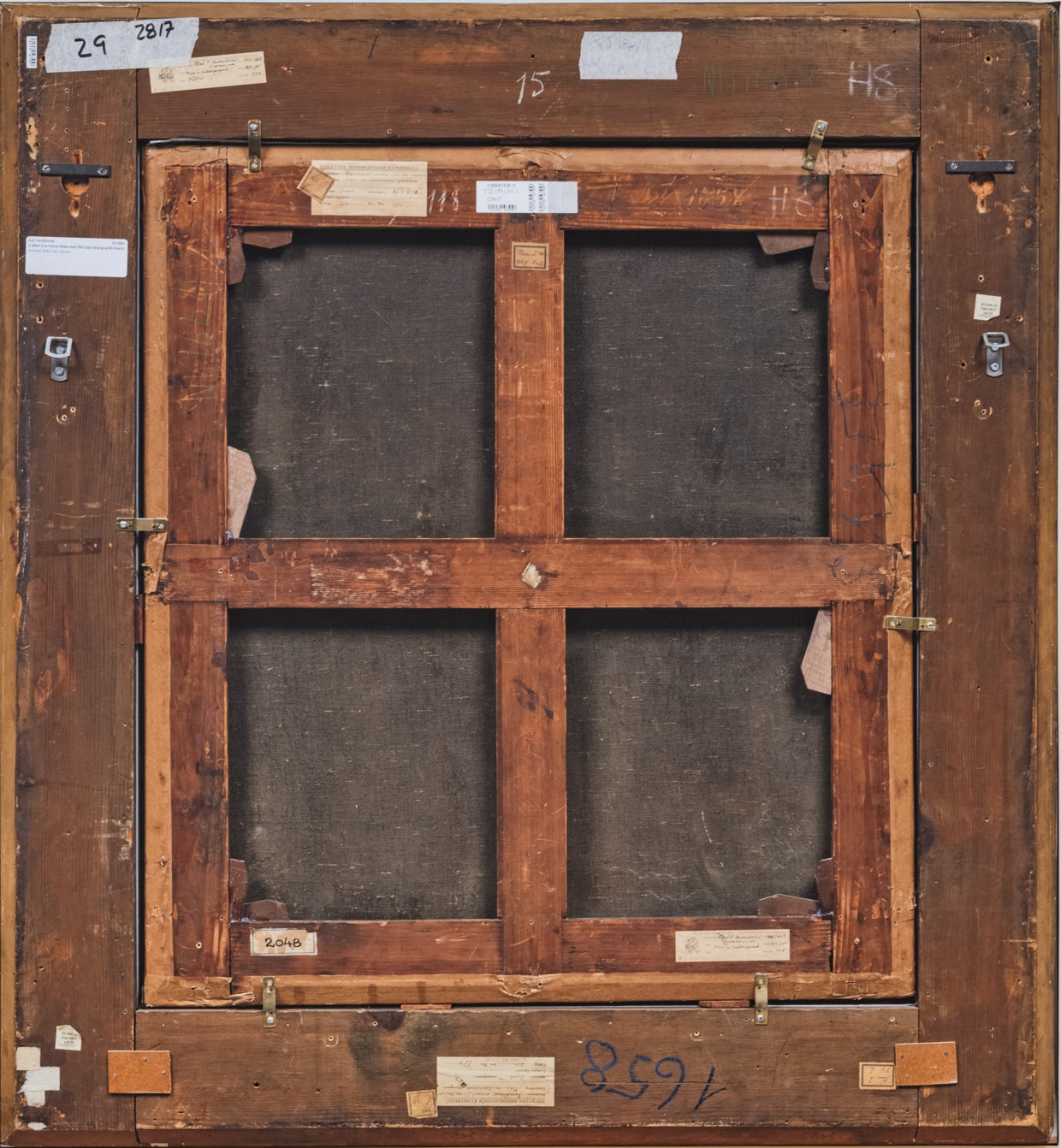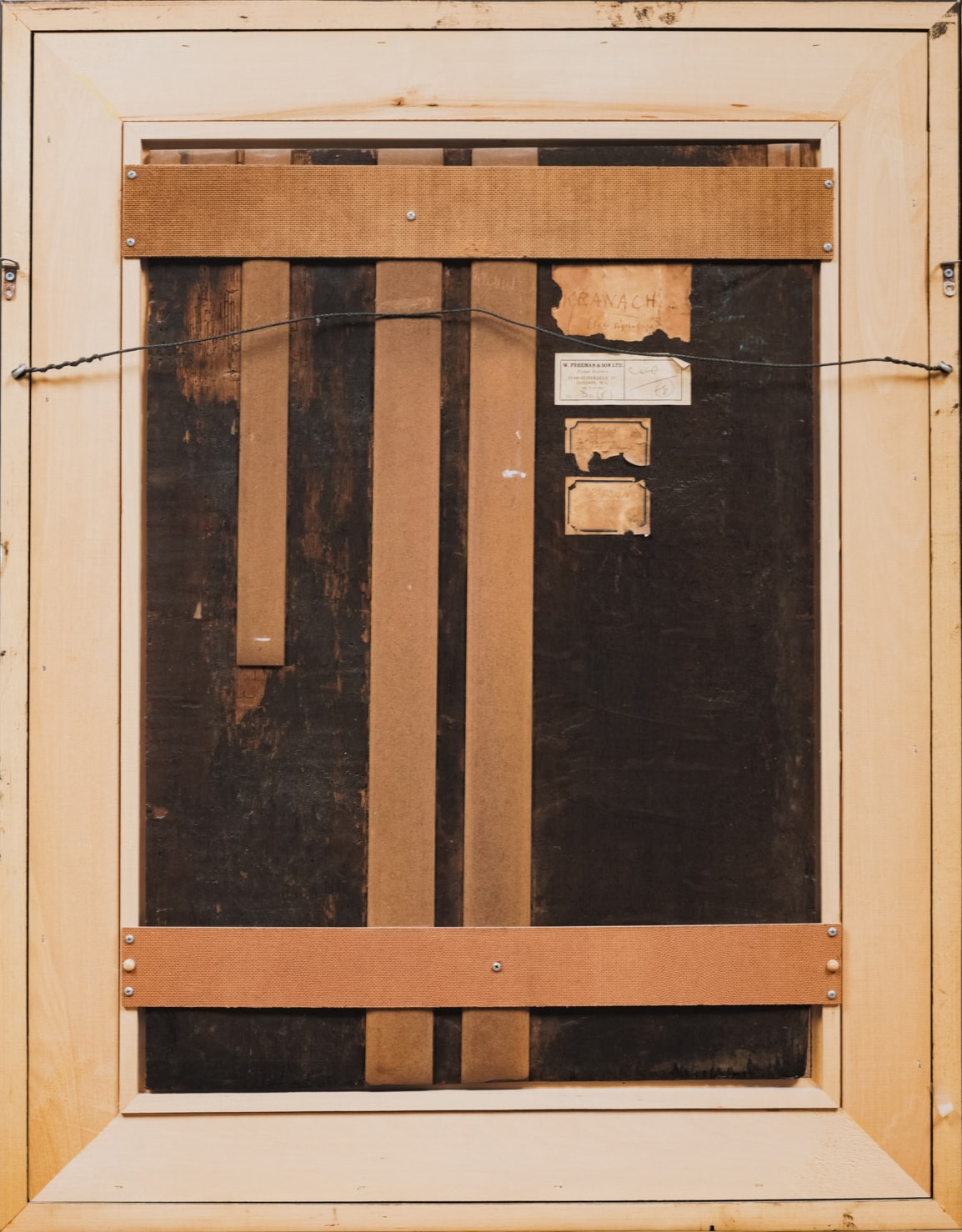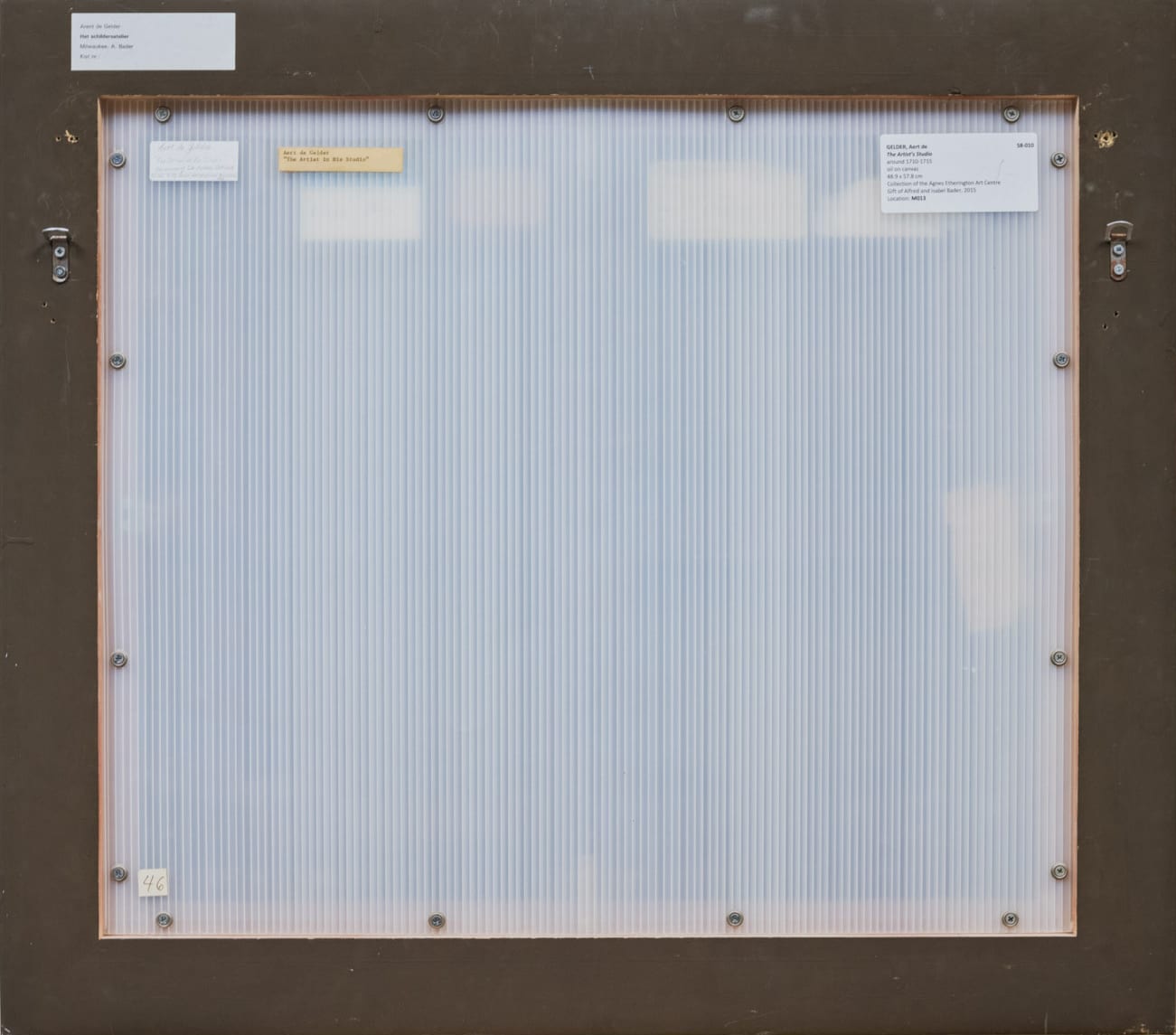Thursday 16 January 2020
Montreal-based photographer Paul Litherland offers unprecedented access to the little-seen “back sides” of paintings from the Agnes’s historical European collection in B-Side Agnes Etherington. Printed to scale, his photographs are mounted on commercial painting stretchers, which lend them the aura of original canvases while offering privileged views of labels, installation hardware and preservation devices. Enlightening viewers about the physical histories of Old Master paintings, this exhibition invites viewers to contemplate notions of the simulacrum and the trompe-l’oeil tradition.
Paul Litherland’s artmaking practice deals mostly with photography and video, and his work has been the focus of solo exhibitions at numerous venues across Canada and abroad. You can discover more online at http://paullitherland.com/
“I am still chasing after this illusion of a surface that photography can mimic and that causes us to question whether what we are looking at is a reproduction or a real thing.”

Paul Litherland, B-Side Ferdinand Bol, 2019, cotton paper and pigment inks mounted on poplar stretcher. Courtesy of the artist.

Paul Litherland, B-Side Anonymous English School, 2019, cotton paper and pigment inks mounted on poplar stretcher. Courtesy of the artist.
B-Side Ferdinand Bol is part of the B-Side Agnes Etherington series because of the number of labels and other bits of information we find. The labels span a long period, but don’t look to be nearly as old as the work, which was produced in 1643. There labels range from small stamps with handwritten notes to a bar code from Christie’s from, presumably, around 2014. There are a lot of wax crayon marks hastily written on the frame, some holes drilled with metal bars that would have served as a hanging system, as well as a set of contemporary hook eyes. From my untrained eye, I would say that both the frame and the stretcher have been replaced along the way. The only part of the work that has survived all this time is the canvas itself. I am attracted to the way the back of the work is treated as a blackboard for the auctioneers, collection managers and conservation workers. It is drilled, nailed, scrawled on, glued and labeled.
B-Side Anonymous English School has been reframed relatively recently and the back of the painting has been reinforced to prevent the wooden paneling from splitting more than it already has. There are only a few labels. Note that the artist is identified as “Cranach” on the labels, but the official designation is “Anonymous.” This distinction emerges from the work of scholars and highlights some of the hurdles that go with finding the correct attribution for a historical work.
The contrasts between the ages of the repairs, the new frame and the original wood backing come together in a graphic combination that is briefly interrupted by the stickers.
This work, like many of the paintings in the European historical art collection at the Agnes, is covered with a backing made of coroplast, a corrugated plastic. Sometimes this is opaque, but in this instance, it is translucent. I am fascinated with the idea that an opaque photo can represent a translucent surface, giving us the illusion that we are seeing through the surface of the photograph. There is a kind of absurdity to this that is intensely pleasurable.
In his essay Difference and Repetition, the French philosopher Gilles Deleuze asks, “Does this not mean … that simulacra provide the means of challenging both the notion of the copy and that of the model?” By transforming the object through the lens of a digital photograph and presenting a facsimile, I am interested to find out to what degree our imagination and expectations fill in the gaps that an imperfect technology brings. Do we see an artwork turned around, or are we looking at an artwork facing us?

Paul Litherland, B-Side Aert de Gelder, 2019, cotton paper and pigment inks mounted on poplar stretcher. Courtesy of the artist.